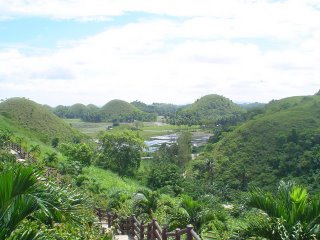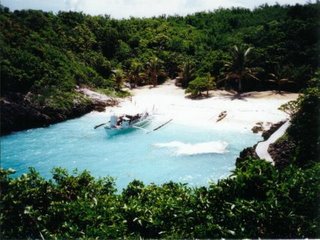
Bohol is an island province of the Philippines located in the Central Visayas region. Its capital is Tagbilaran City. To the west of Bohol is Cebu, to the northeast is the island of Leyte and to the south, across the Bohol Sea is Mindanao.
Bohol is a popular tourist destination with its beaches and resorts. The Chocolate Hills, numerous mounds of limestone formations, is the most popular attraction. The island of Panglao, located just southwest of Tagbilaran City, is home to some of the finest beaches in the country. The Philippine Tarsier, considered by some to be the smallest primates, is indigenous to the island.
The Boholanos refer to their island homeland as the 'Republic of Bohol' with both conviction and pride. A narrow strait separates the island of Cebu and Bohol and both share a common language, but the Boholanos retain a conscious distinction from the Cebuanos.
Bohol lies between the islands of Cebu on the northwest, Leyte on the northeast and Mindanao to the south.
The hills dominate the island of Bohol. Two ranges run roughly parallel on the northwest and the southeast. An interior plateau is dominated by limestone hills. In Carmen, Batuan and Sagbayan, these hills form near perfect cones in great numbers and are collectively referred to as the Chocolate Hills.
Bohol's climate is generally dry, with maximum rainfall between the months of June and October. The interior is cooler than the coast.
Carlos P. Garcia, the country's fourth president, was from Bohol.

 The Philippines still offers remarkable experiences: buried gold; unexplored caves; diving holes; sunken Spanish galleons; dense jungles with rare plants and animals; primeval people; active volcanoes; and uninhabited paradise islands.
The Philippines still offers remarkable experiences: buried gold; unexplored caves; diving holes; sunken Spanish galleons; dense jungles with rare plants and animals; primeval people; active volcanoes; and uninhabited paradise islands.

















